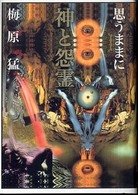- ホーム
- > 洋書
- > 英文書
- > Science / Mathematics
Full Description
The idea of colliding two particle beams to fully exploit the energy of accelerated particles was first proposed by Rolf Wideröe, who in 1943 applied for a patent on the collider concept and was awarded the patent in 1953. The first three colliders — AdA in Italy, CBX in the US, and VEP-1 in the then Soviet Union — came to operation about 50 years ago in the mid-1960s. A number of other colliders followed.Over the past decades, colliders defined the energy frontier in particle physics. Different types of colliers — proton-proton, proton-antiproton, electron-positron, electron-proton, electron-ion and ion-ion colliders — have played complementary roles in fully mapping out the constituents and forces in the Standard Model (SM). We are now at a point where all predicted SM constituents of matter and forces have been found, and all the latest ones were found at colliders. Colliders also play a critical role in advancing beam physics, accelerator research and technology development. It is timely that RAST Volume 7 is dedicated to Colliders.
Contents
High Energy Colliding Beams: What Is Their Future? (Burton Richter); Proton-Proton and Proton-Antiproton Colliders (Walter Scandale); Electron-Positron Circular Colliders (Katsunobu Oide); Ion Colliders (Wolfram Fischer and John M Jowett); Electron-Proton and Electron-Ion Colliders (Ilan Ben-zvi and Vadim Ptitsyn); Linear Colliders (Akira Yamamoto and Kaoru Yokoya); Muon Collider (Robert B Palmer); Photon Collider (Jeffrey Gronberg); Collider Beam Physics (Frank Zimmermann); Collision Technologies for Circular Colliders (Eugene Levichev); Andy Sessler, a Full Life of an Accelerator Physicist (Kwang-Je Kim, Rober, Budnitz and Herman Winick);






